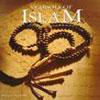
It should be noted that during the Safawid period, part of the historiography is related to the recording of historical developments of the Safawid State. We do not intend to describe such compilations whose outstanding examples are the different 'Alam Ara-s[65] and the Khula-sah al-Tawa-ri-kh. We only intend to point out those historical books that exclusively deal with the history of the advent of Islam, such as the biography of Prophet Muhammad (S) and the accounts of the life of the Imams ('a).
It is worth noting that the authors of the first type of works were not religious scholars but rather another class of the Safawid society such as secretaries, writers and in some instances poets. Here we shall focus on historiography in the Safawid and Qajarid eras which was of the same nature.
After the reign of its founder Sha-h Isma-'i-l and the end of the first phase of the Safawid dynasty, the second phase began, that is the era of the stabilization under Sha-h Tahma-sb. Among the important policies of the Safawid state was paying special attention to Shi'ism and safeguarding it as one of the main pillars of the new government. Sha-h Tahma-sb who was fully aware of this factor, proceeded to deepen the roots of Shi'ite ideology in Iran and for forty years made various efforts to consolidate it.
In the field of history the main objective from the evidential point of view was to make the people familiar with the lives of the Infallible Imams ('a) as well as present them with a critical analysis of the enemies of the Imams ('a) during the early centuries of Islam.
It is worth noting that Iran, especially its eastern parts, was well familiar with the virtues of the Imams ('a) and the promotion of this trend led to the further spread of Shi'ism.
Sha-h Tahma-sb for instance, issued instructions for the translation into Persian of the valuable book entitled Kashf al-Ghummah in order to promote the Shi'ite doctrine among the people. One of the translators of this work, Ni'matulla-h bin Quraysh Razavi- by name, writes in his preface to the translation: "Since his majesty Sha-h Tahma-sb was determined to make the people familiar with the principles of tawalli- (love of the Prophet's Ahl al-Bayt) and tabbarri- (hatred of the enemies of the Ahl al-Bayt),
and since the majority of the people of the time were unaware of the history of the Infallible Imams ('a) and did not know in detail about their great merits, therefore he gave orders that anyone who undertakes the translation into Persian of the book Kashf al-Ghummah fi- Ma'rifah al-A'immah which is a comprehensive work on this subject, will make it beneficial for all, and the faithful will become more firm in their awareness of the Infallible Imams ('a), and this would be a great blessing and a benediction for all." Quraysh adds that it was for this reason that he undertook the task of translating the book.[66]
Another reason for writing the history of Islam during the Safawid period was the growth of akhba-ri- and hadi-thi- tendencies. It is worth noting that even among the Sunnis the closing of the door of ijtiha-d coupled with the domination of akhba-ri- ideas, had weakened jurisprudent and rational thought (philosophy). As a result their potential was directed towards the writing of history and works of rija-l. On the other hand, among the Shi'ites in the post-Shaykh Mufi-d period, since the door of akhba-r or traditions had been closed, not only ijtiha-di- fiqh was strengthened but kala-m and philosophy witnessed growth and development.
This trend naturally limited the scope of historiography and rija-li- works. But with the revival of akhba-ri- ideas in the Safawid period historiography also re-emerged to a certain extent except that these ideas became another factor for restricting the role of history in kala-mi- discussions, especially in the discourse on Imamate. These debates were similar to those which had appeared in the third century in such books as al-Istigha-thah fi- Bida' al-Thala-thah.
One major peculiarity of the Safawid era even among the Shi'ites living in other lands such as Bahrayn, was that they did not have access to a wide variety of historical works. Unlike the era of Ibn Ta-wus and Irbili- when the books of the Sunnis were widely circulated in Iraq and were also referred by the Shi'ites, in Iran and Bahrayn of the Safawid days, only Shi'ite books were available. What has been mentioned from the Sunni books in such works as Ithba-t al-Huda- and Biha-r al-Anwa-r, etc., are not direct quotations but have mostly been borrowed from the books of Ibn Bitri-q, Ibn Ta-wus, Irbili- and the like. However, there are some exemptions in this regard including the direct use of Sunni works as well as words and phrases found in them.
The early historical sources like Ta-ri-kh al-Tabari- or the works of al-Dhahabi- and Ibn Kathi-r which were in wide circulation in the Sunni world, were not available to the Shi'ite scholars. Of the 20 volumes of catalogues of manuscripts published so far by the Ayatulla-h Mar'ashi- Library in Qum, not even a single copy of Ta-ri-kh al-Tabari- has been mentioned. There seems to be dearth of early Shi'ite historical sources as well, in view of the fact that only one manuscript of al-Mas'udi-'s Muruj al-Dhahab is found in the catalogues published by the Mar'ashi- Library, while Ta-ri-kh al-Yaqubi- - another Shi'ite work - is conspicuously absent. As a matter of fact no manuscript of Ta-ri-kh al-Ya'qubi- has so far been traced in Iran. We should also know that 'Alla-mah Majlisi- did not have any copy of Shaykh Mufi-d's al-Jamal. This is all indicative of the extreme poverty of this period concerning the availability of renowned historical sources while we cannot even visualise access to such unknown early works such as Ansa-b al-Ashra-f which have recently come to light in the Muslim world.
This paucity of early historical sources explains the ambiguity in the several treatises written in the second half of the Safawid period on Abu Muslim Khura-sa-ni-, as to whether he was an Imami Shi'ite or an Abbasid loyalist. A Safawid writer who introduced him as an ardent supporter of the Abbasid cause had access only to Muruj al-Dhahab and has quoted it as if he had found an uncut diamond.[67]
But this should not distract attention from the fact that during this period a large number of books in Arabic and Persian were written on the life and conduct of the Imams ('a) and narrations related to them. None of these works could however match the volumes of 'Alla-mah Majlisi-'s Biha-r al-Anwa-r in terms of its comprehensiveness and order.
Volumes 11 to 14 of this encyclopaedic work deal exclusively with the accounts of the Prophets from the Shi'ite sources, the most important of which have been supported by the a-yahs of the holy Qur'a-n and their interpretation and have occasionally been explained in the text. The biography of Prophet Muhammad (S) is spread over 8 volumes (15 to 22) and is in great detail. The method of classification of subjects by 'Alla-mah Majlisi- is worth noting and shows his meticulosity and diligence.
Volume 15 starts with the account of the ancestors of Prophet Muhammad (S) and ends with his period of youth. Volume 16 is related to the marriage of the Prophet with Khadi-jah al-Kubra- and covers his personal characteristics including morals and behaviour. Volume 17 starts with a detailed discussion on the infallibility of the Prophet and allegations of oversight against him, and ends with his miracles.
The first section of the 18th volume is an account of the miracles, divine appointment to prophethood (mab'ath) and ascension (mi'ra-j). Volume 19 includes the events after mab'ath until the Battle of Badr. Volume 20 deals with the military campaigns the Prophet was forced to wage against the infidels, and ends with the Truce of Hudaybiyah and the sending of letters to the kings and rulers inviting them to accept Islam.
Volume 21 covers the period till the farewell pilgrimage (Hajjat al-Wida-') of the Prophet. The 22nd volume gives an account of the relatives and kinsmen of the Prophet, especially his wives and his close companions and ends with his passing away from the world. Volumes 23 to 27 are devoted to the subject of Imamate. Volumes 28 to 31 dwell on the history and characteristics of the caliphs and have been published recently. Volumes 32 to 53 deal with the history, exemplary conduct and merits of the Imams ('a).
In this great encyclopaedia, except for some Shi'ite works like Shaykh Mufi-d's al-Jamal which he had not seen, 'Alla-mah Majlisi- has included whatever he could get hold of the written heritage of the Shi'ites in this field.
Another great work of encyclopaedic nature was compiled during this era by the 'Alla-mah's student Shaykh 'Abdulla-h ibn Nur al-Di-n al-Bahra-ni- under the title al-'Awa-lim. This book also sought to integrate the works of the Shi'ites in various fields. Like Biha-r al-Anwa-r, some of its volumes deal exclusively with the question of Imamate and the Imams ('a), and have been recently published by Mu'assasah al-Ima-m al-Mahdi- ('a) of Qum.
'Alla-mah Majlisi- wrote in Persian a book on the life and history of the 14 Infallibles ('a) under the title Jala-' al-'Uyun, a work that enjoyed wide popularity for several centuries. Shaykh Hurr al-'Amili-'s work entitled Ithba-t al-Huda- is a unique and comprehensive book of its kind on the life of the Imams ('a) and narrations related to them. The miracles attributed to Prophet Muhammad (S) and the Imams ('a) have been collected in Madi-nah al-Ma'a-jiz written by Sayyid Ha-shim al-Bahra-ni- (d. 1107 or 1109). This work has recently been published in 8 volumes.
The books written in the Safawid period on Imamate, mana-qib and the history of the Imams ('a) cannot be counted. However, most of these works lack any scientific value, a situation that prevailed through the Safawid and Qajarid eras. Despite improvement of Iran's foreign relations during the Qajarid era when travels to the holy shrines in Iraq as well as the Hajj pilgrimage to Mecca were greatly facilitated, libraries in Iran did not see any growth and as a result no new major work was accomplished.
It is worth noting that during the Qajarid era, not only the religious scholars but also state officials and secretaries were engaged in writing books on the history of Islam, especially maqtal works on the martyrdom of Imam Husayn ('a). An example in this regard is Fayz al- Dumu' which has been written in beautiful style and was published recently by the Nashr-i Mi-ra-th-i Maktub.
Another example is the book Qamqa-m-i Zakha-r wa Samsa-m-i Bata-r by the Governor of Fars Province, Farha-d Mi-rza Mu'tamid al-Dawlah (son of 'Abba-s Mi-rza- the elder son of Fath 'Ali- Shah Qa-ja-r who died fighting the Russian invaders in what is now the Republic of Azerbaijan).
This work is an account of the martyrdom of Imam Husayn ('a) and has been published several times.[68] The biggest historical work of this period is Na-sikh al-Tawa-ri-kh, which has devoted some volumes to the life of the Prophet and the Imams, but at present except for the section dealing with the history of the Qajarid dynasty and written by Muhammad Taqi- Sepehr Ka-sha-ni-, the rest of the book is not considered of any historical value.
Notes:
[65] Such as the 'Alam Ara--ye Sha-h Isma-'i-l, 'Alam Ara--ye Sha-h Tahma-sb, 'Alam Ara--ye Safawi-, 'Alam Ara--ye 'Abba-si-, and after the Safawid period, the 'Alam Ara--ye Na-diri-.
[66] Refer to the book Causes of the Safawid Downfall, and the article Translation of Religious Texts into Persian during the Safawid Era. Two other translations have been mentioned in the article.
[67] Refer to Mi-ra-th-e Isla-mi- Iran (Islamic Heritage of Iran), published by the Ayatullah Mar'ashi- Najafi- Library, part 2 titled 000Three Treatises on Abu Muslim and Abu Muslims.
[68] Storey, p. 865.
source : alhassanain













